Affiliate links on Android Authority may earn us a commission. Learn more.
First impressions: Samsung Galaxy A7 (2016) falls just short of perfection
Published onJanuary 23, 2016
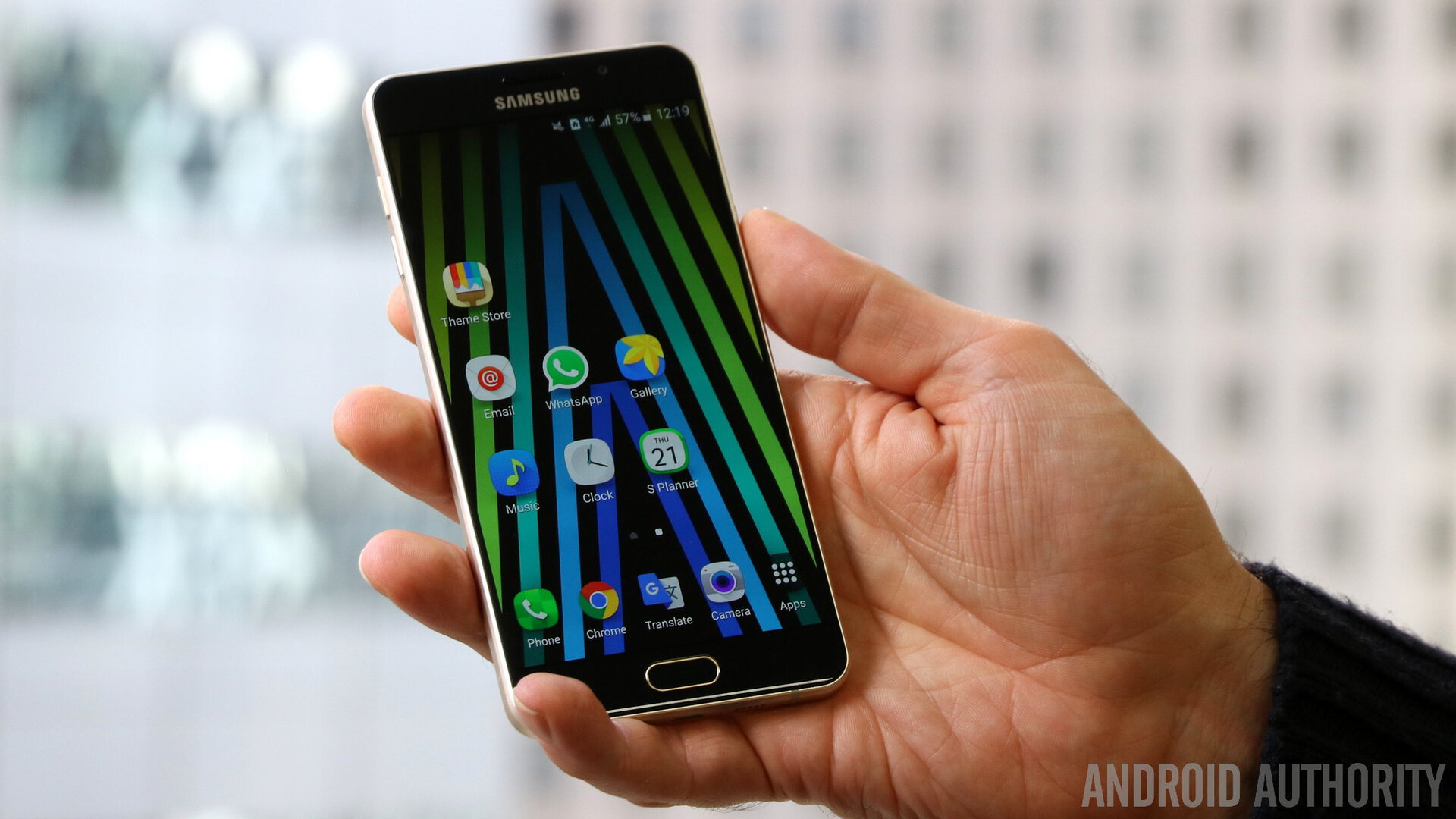
Once upon a time (i.e. pre 2015) Samsung was infamously known for its liberal use of plastics in crafting its products. Despite the fact that said material is often more durable and damage-resistant than more modest metals or glorious glass, the media was always quick to pounce. As competition stepped up from rival companies in China however, Samsung suddenly found itself having to finally make the plunge to produce “premium” products. After testing out the waters with 2014’s Galaxy Alpha – the first Samsung smartphone to feature a metal frame – the Galaxy A series was formally introduced.
The Galaxy A3, A5, A7, and later A8, were all-metal phones that, while hardly flagship products, were still something special. As 2015 came to a close, however, rumors and leaks began to emerge about the next generation of “A” products. Featuring a glass front and back, the Galaxy A (2016) series look remarkably similar to the design language Samsung employed in last year’s Galaxy S6. Having spent some time with the 5.5-inch Galaxy A7 (2016), it is now time to share some initial impressions of the newest – and perhaps most noteworthy – mid-range offering from Korea’s largest OEM.
Please note that as I spent time with both the A5 (2016) and A7 (2016), I mentioned the smaller version in some sections of this piece. Image pictures used however, are specifically of, and taken by, the A7 variant.
Don’t miss:
Visually speaking? A splendid surprise
Upon opening the unassuming white box for the Galaxy A7 (2016) – packaging color may vary depending on place of purchase – the phone is the first thing one lays eyes on, and it is quite impressive to say the least. In terms of design, the Galaxy A7 (2016) looks like a Galaxy S6, but with the added benefit of being not only larger, but having somewhat sculpted sides as well. While this does very little in terms of handling due to the larger size of the phone, it does make the product seem that much more special, given that the frame is not a standard, solid ring but instead has some small indentations.
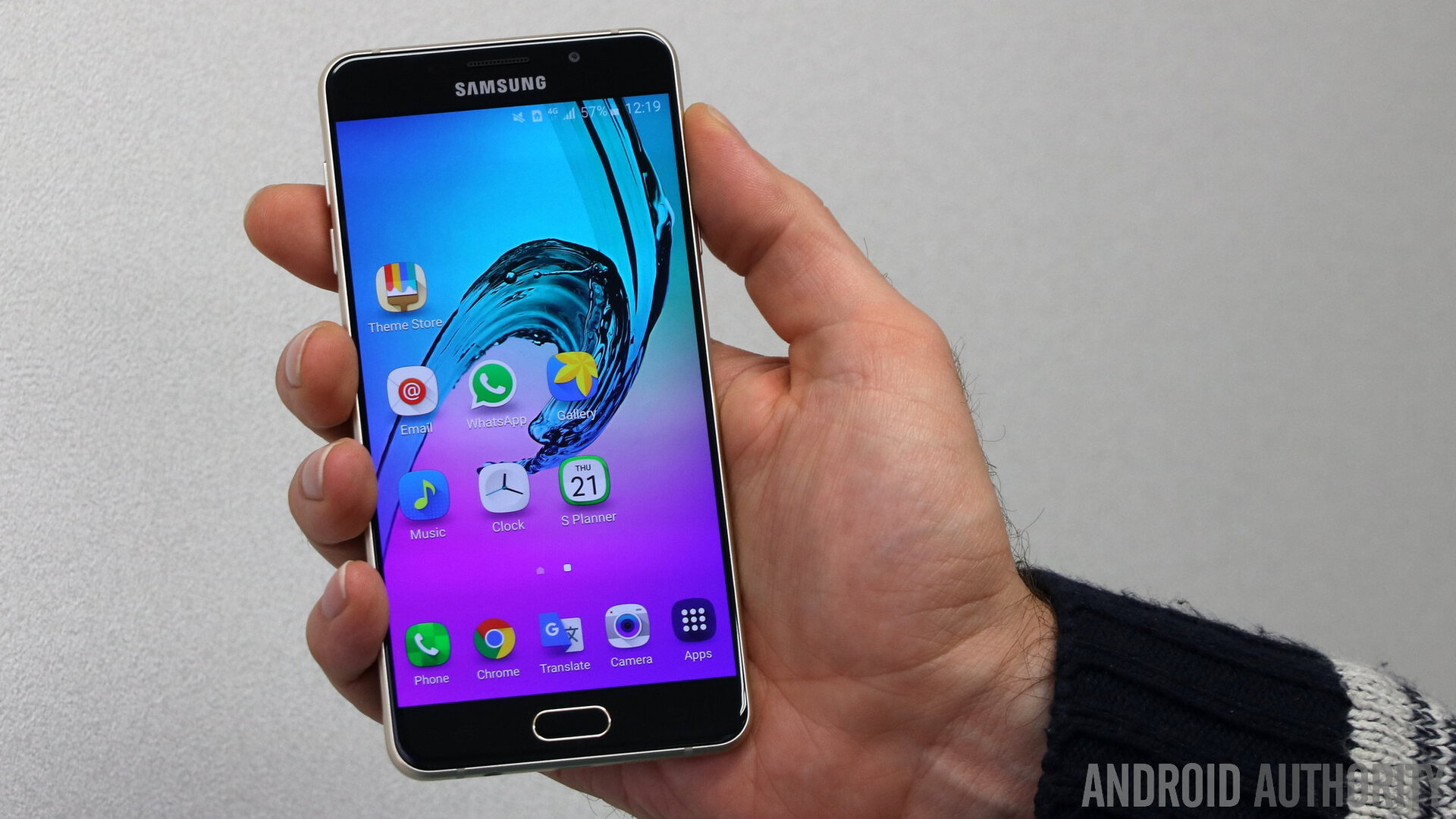
The glass is gorgeous, and regardless of if one has held the S6 or not. While last year’s metal body was nice to be sure, it came across as somewhat cheap due to the extremely thin back panel and light weight of the phone. The A7 feels significantly heavier – perhaps too much so – which goes a long way to making it feel substantive. Both the front and back make use of 2.5D glass, and the curve is quite nice looking.
At the same time however, the almost cumbersome weight of the A7 means that should it drop, the impact will be that much more significant due to the extra mass. It is hard to convey just how unexpectedly heavy the phone is. While not alarmingly so or heavy to the extent it would affect usability, it never ceased to surprise not only myself, but those who asked to see the A7, how heavy it was.
Superb screen
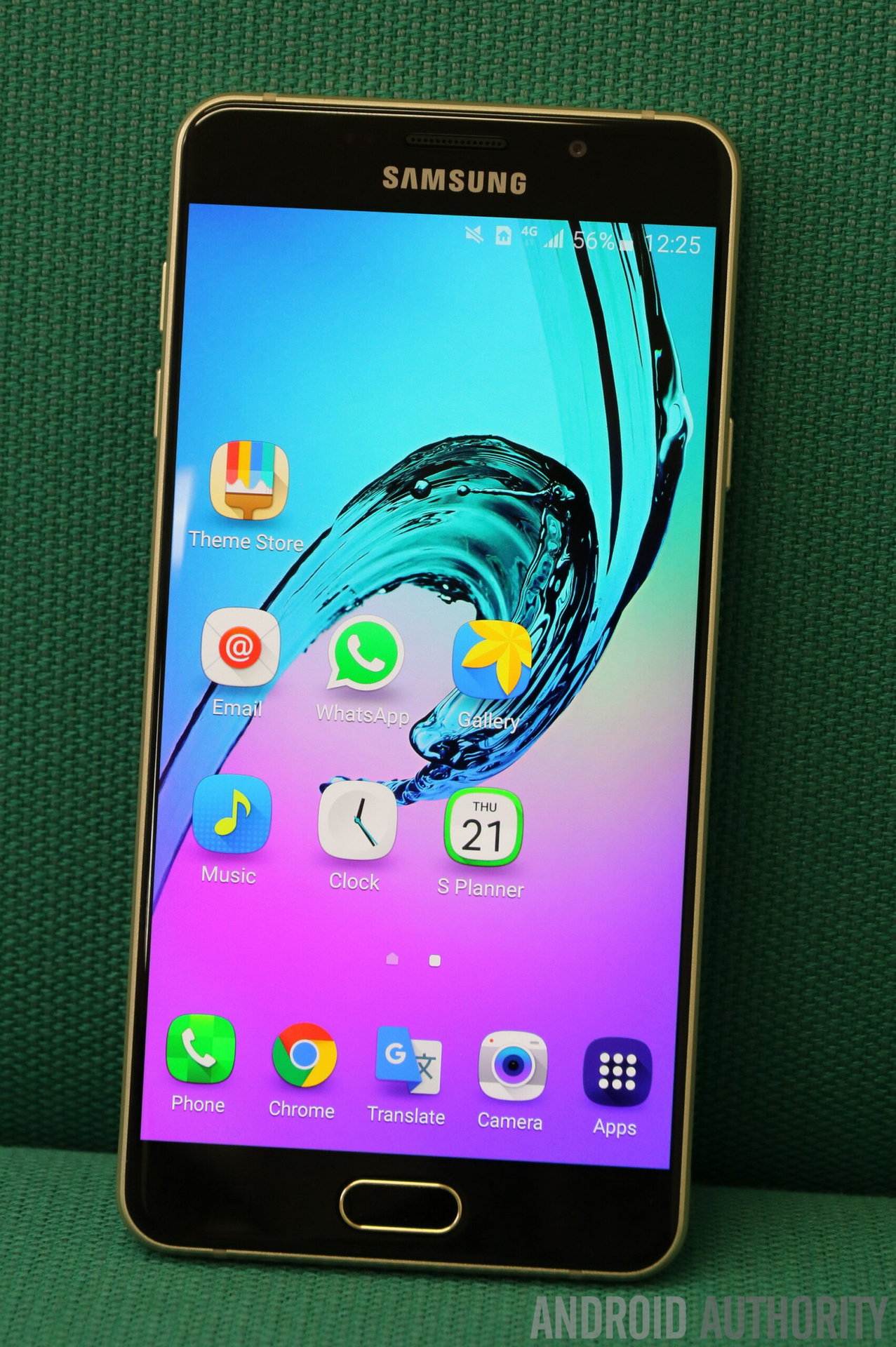
Another big surprise? The display was absolutely incredible. Unlike the Nexus 6P and the BlackBerry Priv – both of which I have spent substantial time with – Samsung’s use of an SAMOLED display brings with it amazingly crisp, clear whites. The color reproduction in general is fantastic, and of course vibrant as OLED displays are known to be. Again the idea that this was a mid-range pair of products with such a stunning screen really impressed.
Performance power and the blazing battery life
Performance-wise the A7 was quite smooth, at least after the initial set up process is finished. Unlike the A8 which had an astounding amount of lag, the A7 – especially with 3GB of RAM – almost never stuttered. Typing was smooth, multitasking was fast and fluid, even scrolling through the settings menu was fast, something that curiously can not be said of the Note 5. Perhaps even more impressive, the A5 – with only 2GB of RAM – was also extremely snappy and actually served to allay the belief that mid-range phones running mid-range SoCs will eternally be hampered by slow silicon.
The phone also has support for microSD, which makes it the first glass backed Samsung device to do so. Those who lamented the lack of such a feature in last year’s Galaxy S6 will be pleased to see its presence, though it’s worth pointing out that this is arguably a result of the eMMC storage modules used in the device as opposed to the faster NFS standard in the S6.
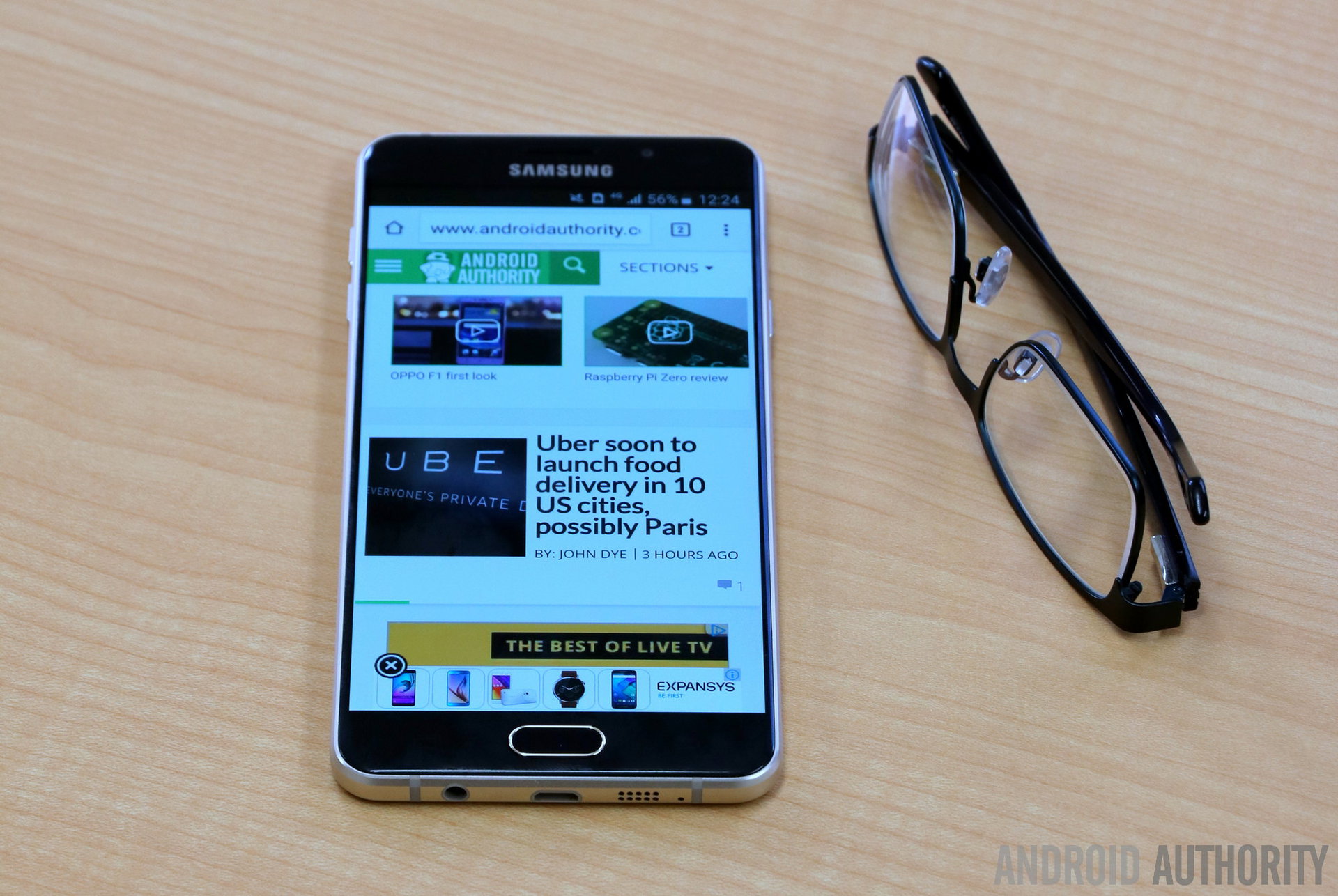
Battery life is excellent for a phone of this size, if not outright impressive. Having temporarily come from a Galaxy Alpha running Lollipop (read: atrocious battery life) the A7 is incredible. It would easily last the entire day and, with more moderate usage, even half of the next one as well. In fact, not once during the time spent with the device did the battery life ever fall below 25% before it was charged, and that was quite impressive to say the least. The A5, while having a smaller battery, was also quite impressive.
Note that as this is not a full review, benchmark scores, game performance, and battery life tests will not be provided. Stay tuned for our full written review coming soon to find out the full monty.
A peculiar and problematic pricing problem
The other main problem here is that the Galaxy A (2016) series – the A5 in particular – comes across as less relevant and sensible due to the sheer fact that, as the Galaxy S6 is nearing its one year anniversary, said handset is available at significantly discounted prices and in some cases, might actually be more affordable than either the A5 or A7.
Given that the S6 has an LED indicator, has haptic feedback on the capacative keys, has wireless charging, has a biometric sensor, has a dual-LED flash, as well as has a significantly higher resolution display, a faster SoC, and more features in general, one might be forgiven if they fail to see the logic in going for a lower-end product that has such a high-end price tag.
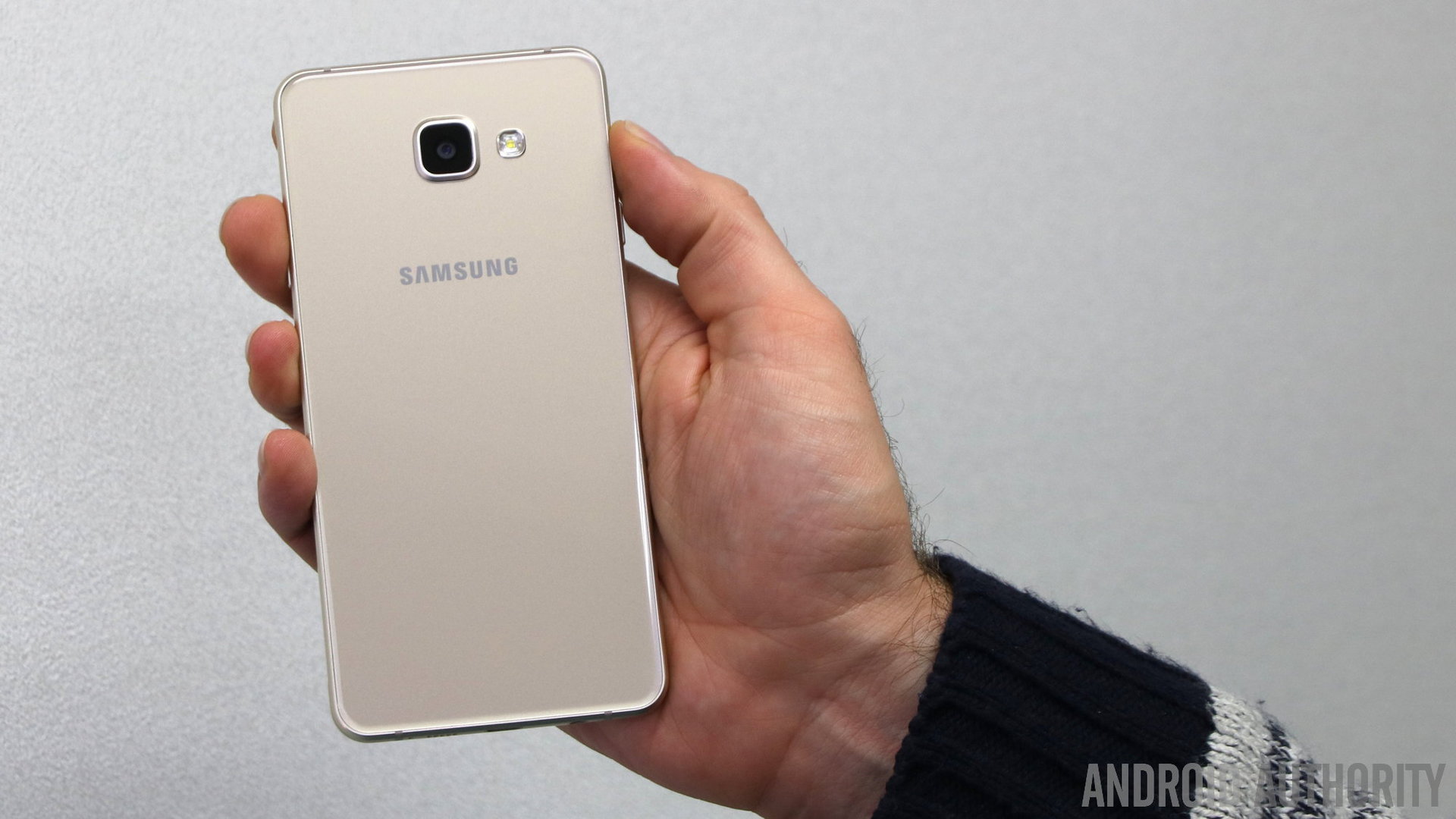
The pricing issue becomes more of a concern given that the A7 procured for this impressions piece cost around 52,000 yen after import taxes, or roughly $437 based on today’s exchange rate. This makes it more expensive than numerous mid-range close competitors, as well as some of some flagship products such as the Motorola Moto X Pure Edition and the OnePlus Two. And then there is the now “aging” LG G4 which can a lso be had for quite a deal these days, and the aforementioned price breaks on the Galaxy S6.
The question then boils down to the design issue: does having glass make that much of a difference in the end? While the design of the Galaxy A (2016) series is definitely a strong point, and the glass does go a long way to making the product feel far more luxurious than the internal components might actually be, depending on a budget or priority, all the looks in the world can only matter so much. The phone lacks the customization creativity of the Moto X, or even the Moto G, and the OnePlus X has the same glass sandwich factor going on – and an AMOLED display to boot – for significantly less money, albeit with 2014-era hardware.
And therein lies the major problem. Given the looks and even pricing, for all intents and purposes, there is almost nothing that would make one think the Galaxy A (2016) series is not a new Galaxy S device. It’s rather striking how much a difference the presence of metal and glass can make, and it truly elevates the product to an almost top tier level. Unfortunately, there are some other issues to address.
The missing pieces
With all these positives pointed out about this particular product, one might be confused in their consideration of what exactly is “mid-range”. The problem of course, is Samsung’s need to substantiate the existence of its Galaxy S line. All the more so given that this year, it looks as if the Galaxy S7 will bear a strong resemblance to last year’s offering.
This “need” presents itself in several ways:
1. There is no notification LED. Why it’s missing is a mystery, but just as how Samsung tried to cut every possible corner possible with the Galaxy A8 and Galaxy Tab S2, so too does it attempt here.
This is extremely irritating when charging the device, as you can’t readily check on the status and thus need to constantly turn on the screen.
2. The capacitive keys lack haptic feedback. This comes across as being an almost pathetic costs savings element. Whereas countless low end models feature painted on capacitive keys (as well as the Galaxy Tab S2), the A7 (2006) features back-lit variants. Thus money was spent.
Yet apparently Samsung is not willing to spend the few cents it would require to provide vibration upon touching said buttons. It makes the experience almost bizarre, given that the device itself does support haptic feedback.
3. The deliberate dumbing down also extends to the phone’s features as well. Despite the device having a reasonably powerful SoC for a mid range device, other unfortunately mishaps have occurred. For example, the motion sensitive background image feature is unavailable. The multiple background images for the lock screen is unavailable (the Galaxy S6 allows for up to 30 different image to be set for rotation throughout the day).
The camera…
Unfortunately one of the major letdowns with the phone comes from the camera, which has at times atrocious levels of inability to capture a scene. For example, the following pictures were taken at a concert in Yokohama, Japan. Notice how it is almost impossible to see anything whatsoever despite the presence of light, and how grainy the pair of images below are, in particular.
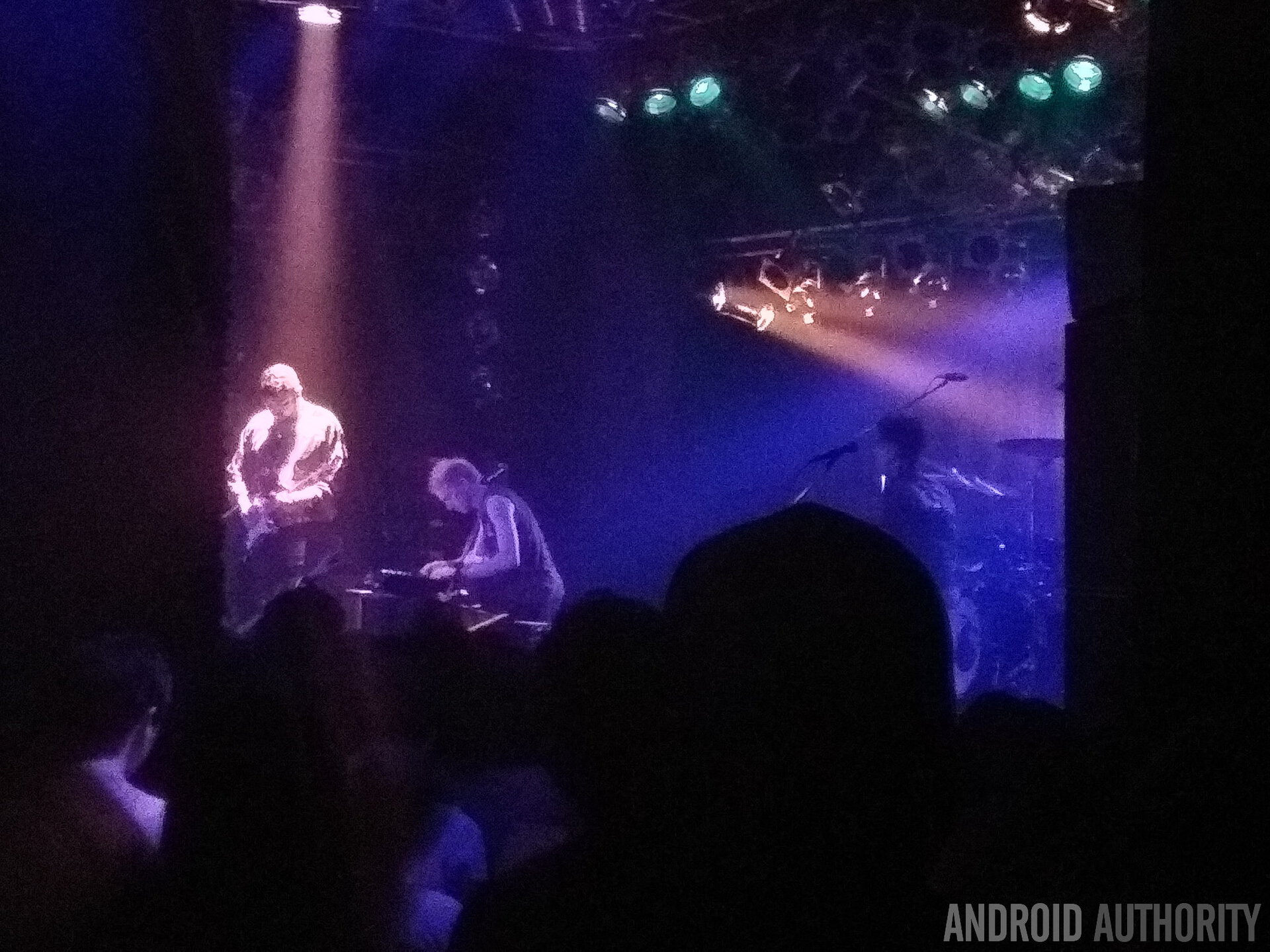
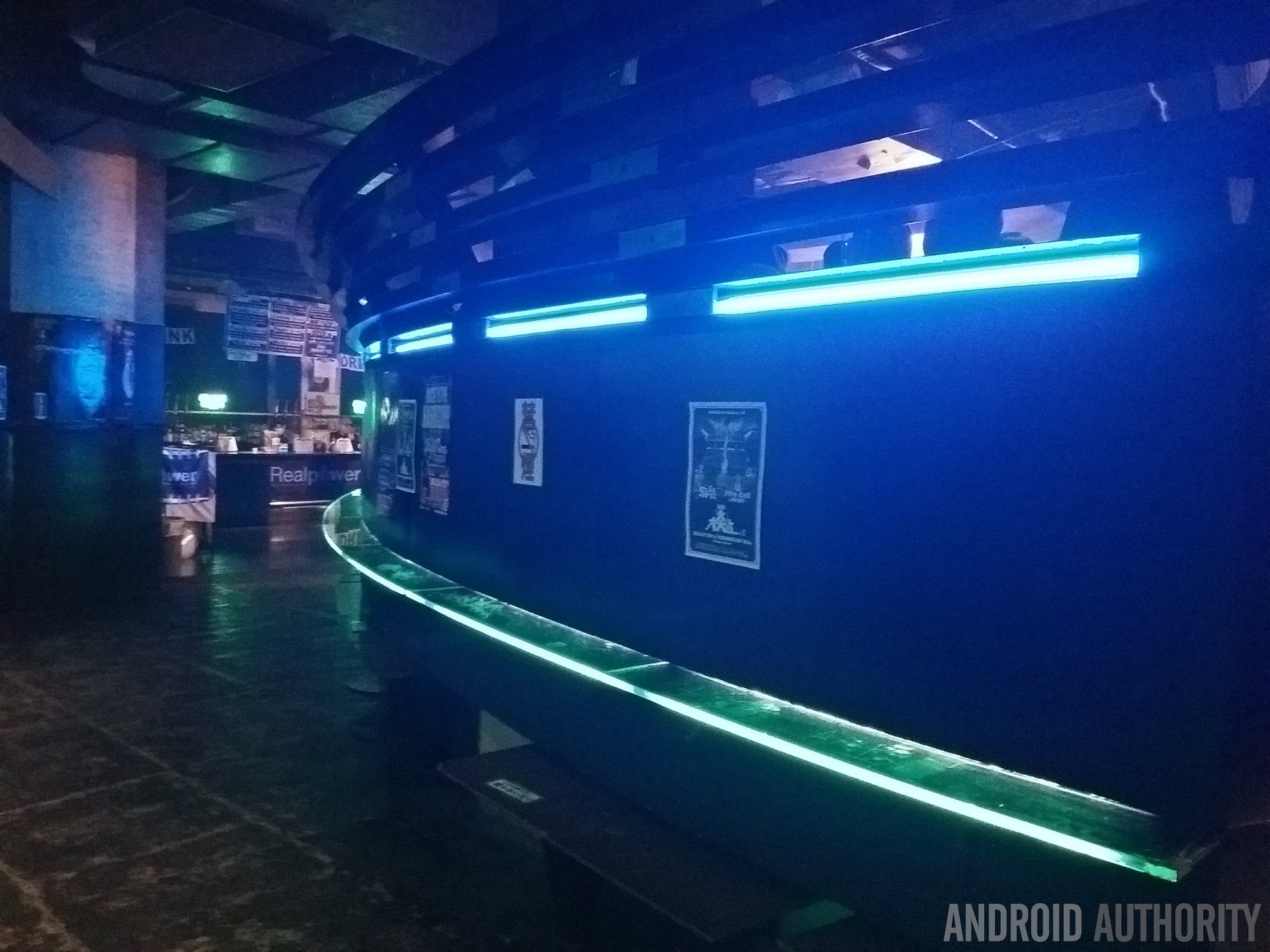
The camera experience, on the whole, leaves a lot to be desired. The concert pics in particular were of such bad quality so as to render them unusable even for blogging. Video recorded during the event yielded similar results. Granted even some top tier products run into trouble with night photography, but in this day and age, it’s indeed disappointing to see what $437 doesn’t get you.
Even images captured in broad daylight often fail to impress. The whole experience would be perfectly reasonable if it were included on a lower end product, however given the use of metal and glass, and the overall refined and “luxury” experience offered by the A7, it just comes across as not just poor quality, but disappointing at that.
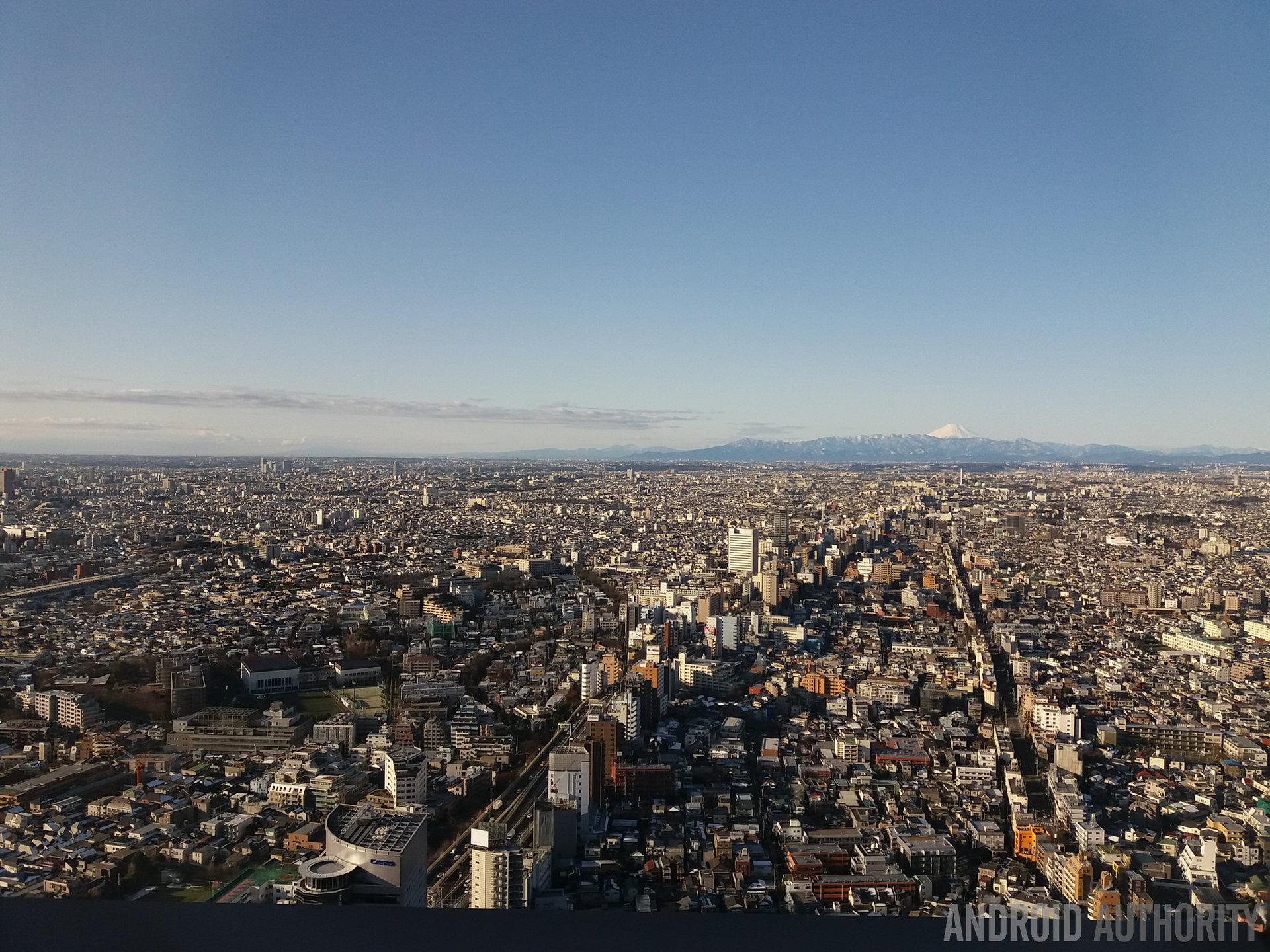
This stands as a stark contrast to say, the LG V10 which had arguably the best low light photography I’ve ever seen in a smartphone before, as well as some stunning day time capture capability. Of course said device costs significantly more money, but if photography is important to you, the A7 probably isn’t the phone to purchase.
It’s decisions like these that may have been passable last year when the A series was a new line and therefore there was nothing to expect. But it’s quite another story with this “new” Samsung and its clear decision to focus on making even mid-range devices more premium. Given that the Galaxy S5 (or perhaps even S4) seemingly could take better pictures then this device, it almost seems as if Samsung is deliberately crippling the product just to force consumers to spend for the S7.
The question then, is why Samsung has made a determined effort to stymie the performance and usability of an otherwise fantastic device. In a very real sense, the Galaxy A7 (2016) could have been the large screen Galaxy S6 of people’s dreams.
[related_videos title=”Hot Samsung videos” align=”center” type=”custom” videos=”667300,652065,650695,638334″]
Wrap up
The Galaxy A7 is actually a wonderful phone to use after getting past the minor shortcomings. Battery life is indeed fantastic, at least based in preliminary usage, the screen is bright and brilliant and would feel right at home on a Galaxy S phone, the device is responsive and generally quite fast with little to none of the lag that served to diminish the overall experience of last summer’s Galaxy A8.
In many ways, the Galaxy A7 may be the real take away from the first half of 2016. The Galaxy S7 looks to look just like its predecessor, at least based on leaks. This means that from a design perspective, the phone will instantly feel both familiar and stale to who bought in last year. Samsung may seek to include premium components, however their tangible benefits will undoubtedly be lost on a great number of customers.
Instead it’s the rise of the miraculous mid-ranger that has the pure power to impress. Last year’s Galaxy A7 was a rather bland device, though it did represent a major move to metal for Samsung’s smartphones. The Galaxy A7 (2016) on the other hand, represents a rare opportunity for the power of premium production to seep into other product lines.
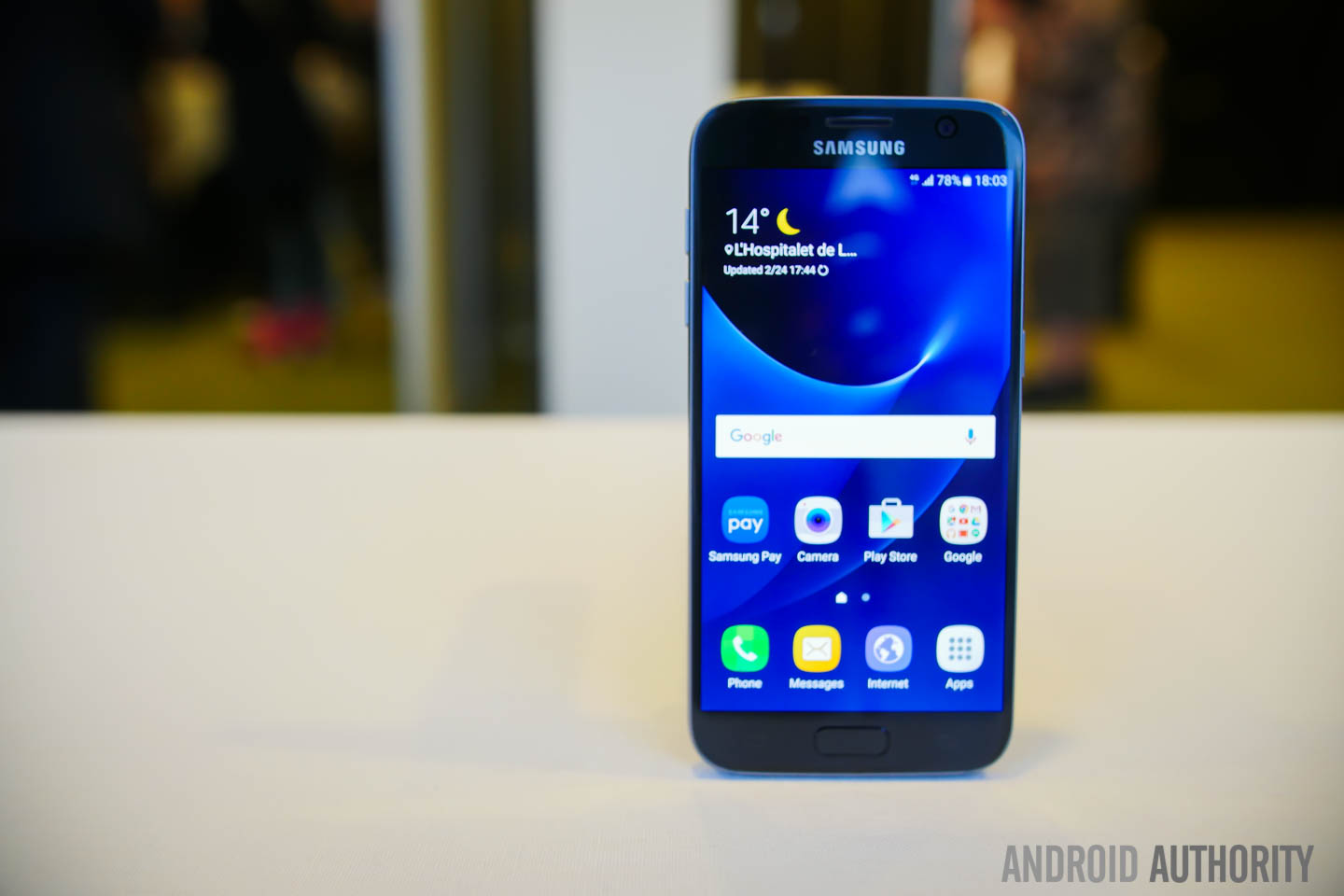
It makes perfect sense that Samsung has deliberately hobbled parts of the phone. Were the A7 to have a better camera, an LED flash, capacitive buttons with haptic feedback, customers might actually turn to it instead of going for a Galaxy S7+ or Galaxy S7 Edge+.